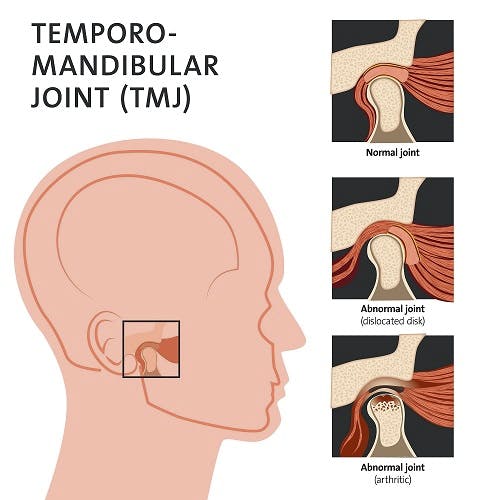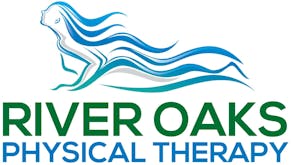Most of our clients suffering from TMJ disorder come with problems with their jaw muscle tenderness and/or headache. Some of them hear clicking of the joints while chewing. The medical term for this disorder is called Temporomandibular Joint (TMJ) Dysfunction.

The jaw joint, referred to as the temporomandibular joint or TMJ, is made up of the bone below the mouth (the mandible, commonly referred to as the jawbone) and the bone just above the mouth (the maxilla). The lower jaw and is one of the most frequently used joints of the body. Temporomandibular joint (TMJ) dysfunction affects more women than men and though generally affects people between the ages of 20 and 40; women especially between 18-44 years of age have the biggest increased risk of TMJ. Risk factors include people who have a history of clenching and grinding their teeth (bruxism), dental work, trauma to the jaw or face, increased anxiety or stress, or poor posture. Causes of temporomandibular joint (TMJ) syndrome include injury to the teeth or jaw, misalignment of the teeth or jaw, teeth grinding, stress, arthritis, and gum chewing. Some kinds of arthritis, often osteoarthritis, can affect the TMJ and lead to pain when moving the joint. “Researchers have estimated that 65%–85% of Americans experience some symptoms of temporomandibular joint dysfunction (TMD)”
Signs and symptoms of TMJ disorder:
- Psycho social factors - Emotional stress (anxiety, depression, anger)
- Facial pain, jaw pain tenderness of your jaw.
- Pain in one or both of the temporomandibular joints.
- Aching pain in and around your ear.
- Difficulty chewing or pain while chewing
- Other Symptoms can include neck pain and joint pain
Help yourself with these TMJ pain relief tips:
- Keep your face relaxed with your lips together and teeth apart.
- Jaw Exercises
- Massage your jaw, cheeks, and temples regularly.
- Avoid grinding or clenching your teeth, and minimize chewy or hard foods in your diet and how often you chew gum.
- Non-steroidal anti-inflammatory drugs (NSAIDs), such as ibuprofen (Advil, Motrin IB, others),
Physical Therapy for TMJ
Physical therapists and physical therapy help people with TMD ease pain, regain normal jaw movement, and lessen daily stress on the jaw. The physical therapy for TMJ consists of- Ultrasound treatment (in which deep heat dilates the blood vessels to carry out the toxic lactic acid that causes the pain)
- Electromyographic biofeedback (in which the person learns to relax the muscles)
- Spray and stretch exercises (in which the jaw is stretched open with a passive jaw motion device after the skin over the painful area has been sprayed with a refrigerant or numbed with ice)
- friction massage
- Transcutaneous electrical nerve stimulation (TENS)
Schedule an Appointment with a Physical Therapist
Please contact River Oaks PT today to schedule an appointment with a physical therapist for your TMJ associated pain. We are standing by to assist you!Testimonials
"Teresa is a one of a kind expert, as a TMJ patient, Teresa is the only therapist that ever provided me any relief. Don't miss out, she can help you too."
sandy wieber from
Dec 06, 2018
From Google

 -->
<!--
-->
<!--